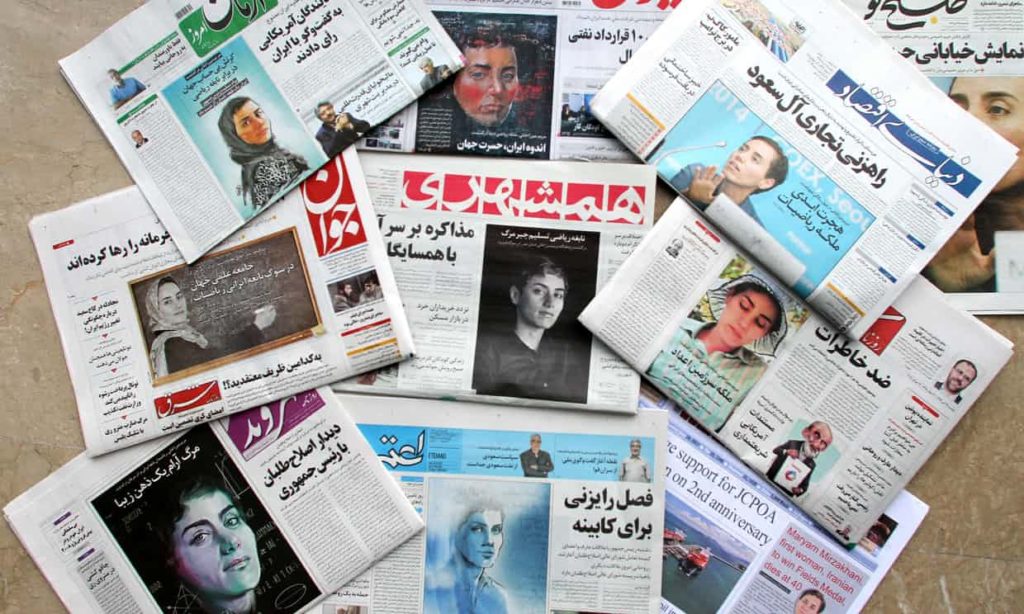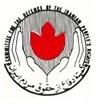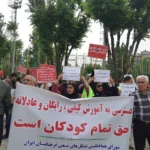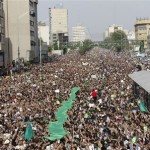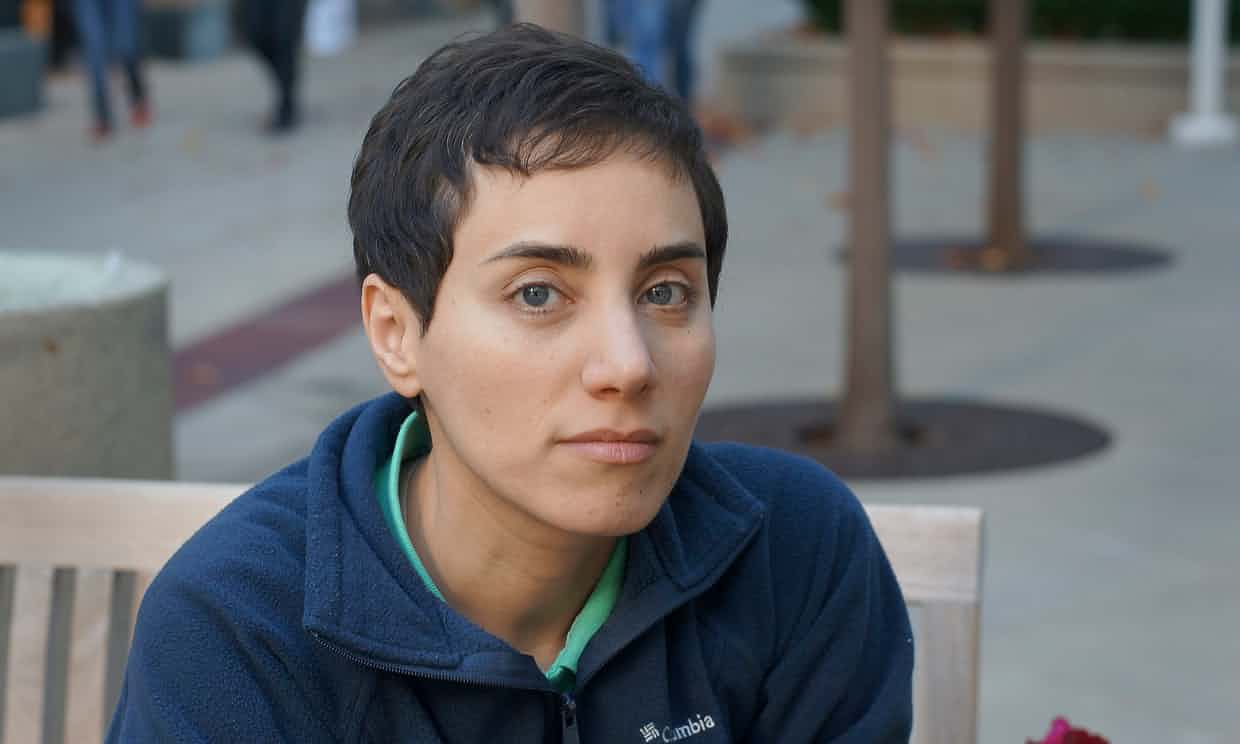
The Guardian, 16 July 2017
Tehran front pages run photographs of mathematician without head covering, showing her prominence overrode rules
Iran’s state-run newspapers on Sunday broke with the country’s strict rules on female dress to show the mathematician Maryam Mirzakhani with her head uncovered, as the country mourned the death at the age of 40 of the woman known as the queen of mathematics.
Tributes were led by the president, Hassan Rouhani, who posted a recent picture of Mirzakhani on Instagram without a hijab. “The grievous passing of Maryam Mirzakhani, the eminent Iranian and world-renowned mathematician, is very much heartrending,” he wrote.
Mirzakhani, a Stanford University professor, died in hospital in California on Saturday after cancer in her breast spread to her bone marrow. The university president, Marc Tessier-Lavigne, said Mirzakhani’s influence would live on in the “thousands of women she inspired” to pursue maths and science.
When in 2014 she became the first woman to win the Fields medal, often described as maths’ Nobel prize, Iranian newspapers digitally retouched Mirzakhani’s photograph to put a scarf over her head while others published a sketch showing only her face. Iran’s strict laws on female dress require all women to be covered in public.
Sunday’s front pages of Iranian newspapers bearing portraits of the scientist Maryam Mirzakhani, who died of cancer. Photograph: Atta Kenare/AFP/Getty Images
The front page of Hamshahri, a state newspaper, particularly stood out, winning praise for portraying her as she had lived. “Maths genius yielded to algebra of death”, read its headline over a picture of Mirzakhani without a hijab. “The queen of mathematics’ eternal departure”, read the headline of Donya-e-Eqtesad’s headline.
The Fields medal, first given in 1936, is awarded to exceptional talents under the age of 40 once every four years. Mirzakhani won the prize in 2014 for her “outstanding contributions to the dynamics and geometry of Riemann surfaces and their moduli spaces”.
Christiane Rousseau, vice-president of the International Mathematics Union, said at the time it was “an extraordinary moment” and compared it to Marie Curie’s Nobel prizes in physics and chemistry at the beginning of the 20th century.
In another sign that Mirzakhani was breaking more taboos even after her death, a group of parliamentarians in Iran on Sunday urged the speeding up of an amendment to a law that would allow children of Iranian mothers married to foreigners to be given Iranian nationality.
Mirzakhani is survived by her Czech scientist husband and her daughter but a marriage between an Iranian woman and a non-Muslim man was previously not recognised, complicating visits to Iran by their children. Fars news agency reported on Sunday that 60 MPs were pressing for the amendments so that Mirzakhani’s daughter could visit Iran.
Mirzakhanai was born and raised in Iran. She studied at Tehran’s prestigious Sharif university and later finished a PhD at Harvard in 2004.
She had survived a bus crash in February 1998 when a vehicle carrying the mathematical elite of Tehran’s Sharif University back from a competition in the western city of Ahwaz skidded out of control and crashed into a ravine. Seven award-winning mathematicians and two drivers lost their lives in the crash.
Advertisement
Mirzakhani and at least two other survivors later left their country, underlying Iran’s long-standing brain drain difficulties.
“A light was turned off today, it breaks my heart … Gone far too soon,” said Firouz Naderi, an Iranian Nasa scientist. “A genius? Yes. But also a daughter, a mother and a wife.”
Tessier-Lavigne, the Stanford president, described Mirzakhanai as “a brilliant mathematical theorist, and also a humble person who accepted honours only with the hope that it might encourage others to follow her path.”
Edward Frenkel, University of California Berkeley professor and the author of the New York Times bestseller Love and Math, tweeted: “RIP #MaryamMirzakhani – a great mathematician and wonderful human being who broke a glass ceiling and inspired many, men and women alike.”
Mirzakhani predominantly worked on geometric structures on surfaces and their deformations.
A statement from Stanford said she “specialised in theoretical mathematics that read like a foreign language by those outside of mathematics: moduli spaces, Teichmüller theory, hyperbolic geometry, Ergodic theory and symplectic geometry.”
In a rare 2008 interview, with the Clay Mathematics Institute, Mirzakhani said as a child she dreamt of becoming a writer and did poorly at maths at school.
“I never thought I would pursue mathematics until my last year in high school,” she said, crediting her older brother for getting her interested in maths and science.
“My older brother was the person who got me interested in science in general. He used to tell me what he learned in school. My first memory of mathematics is probably the time that he told me about the problem of adding numbers from 1 to 100.” (The answer is 5,050 and the trick is to look at pairs that add up to 101.)

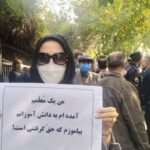

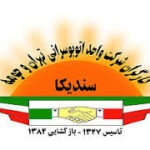







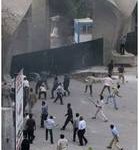
 Posted in
Posted in 